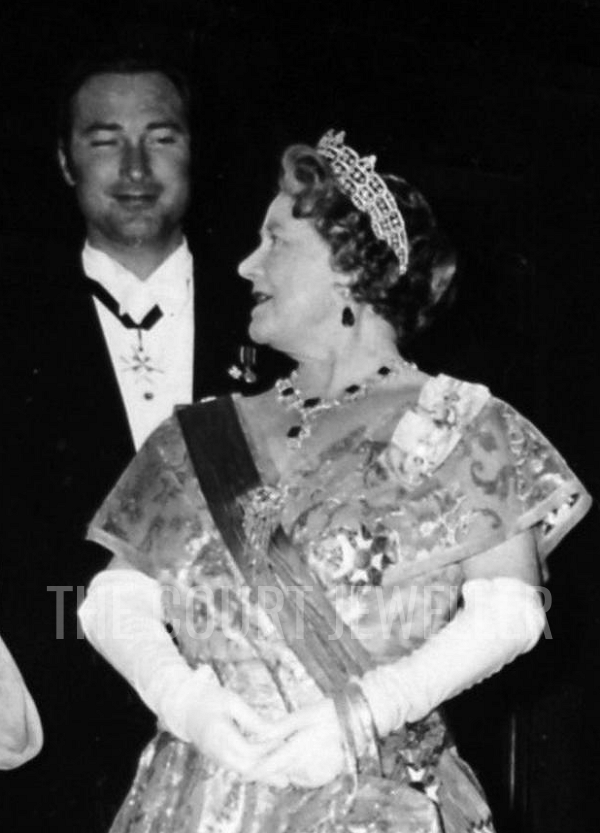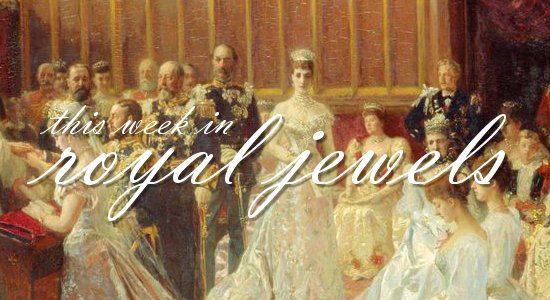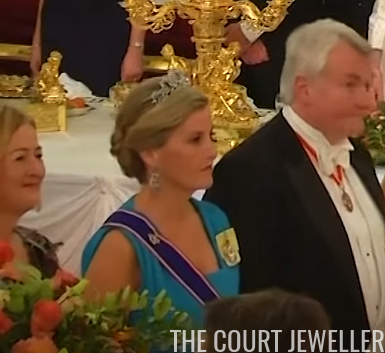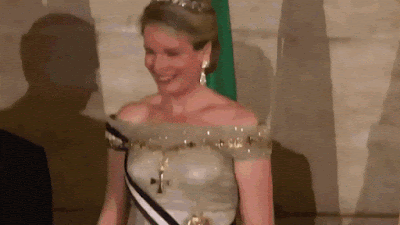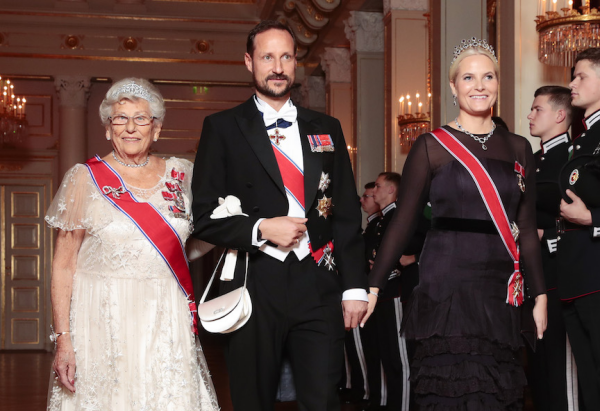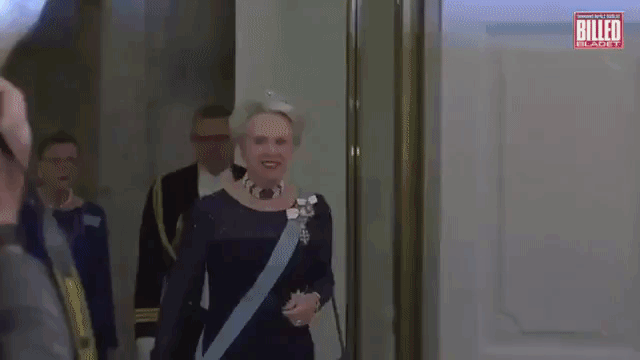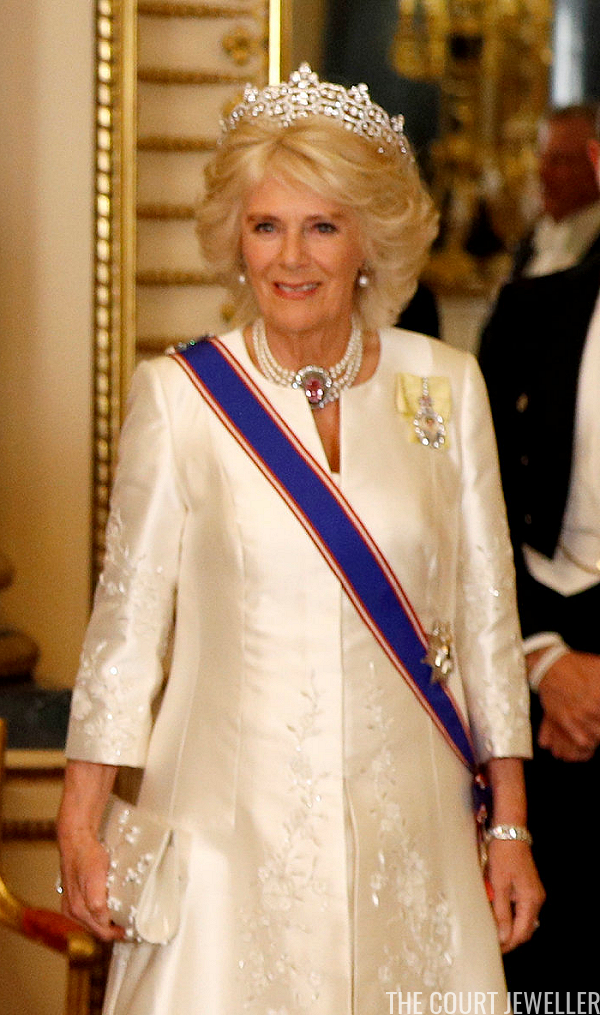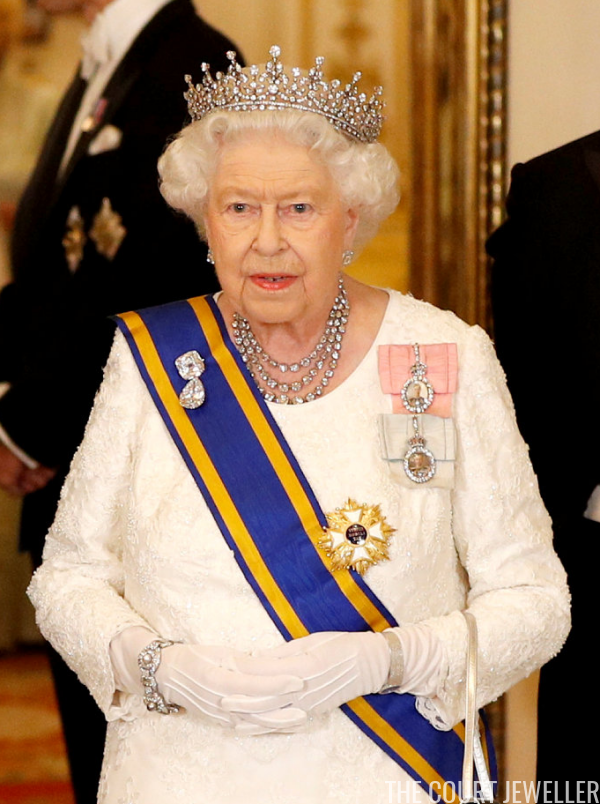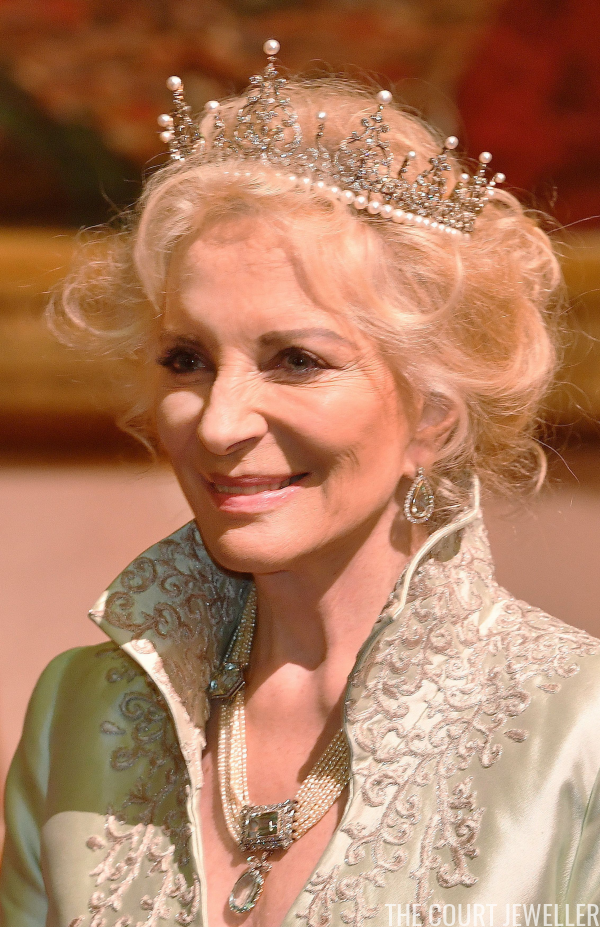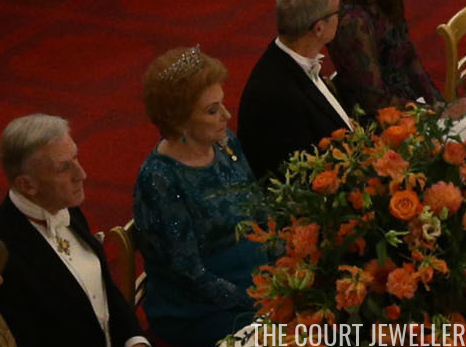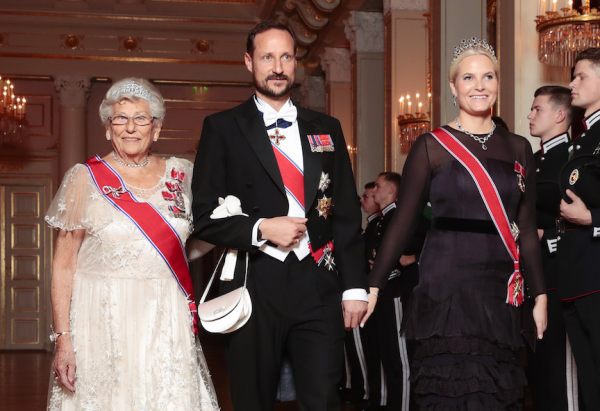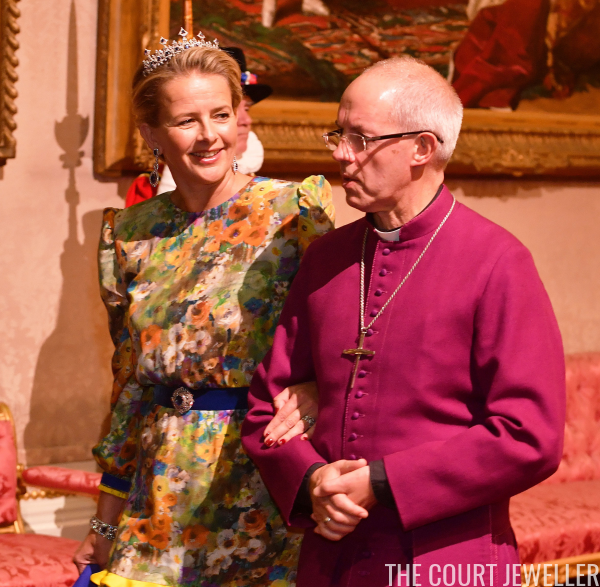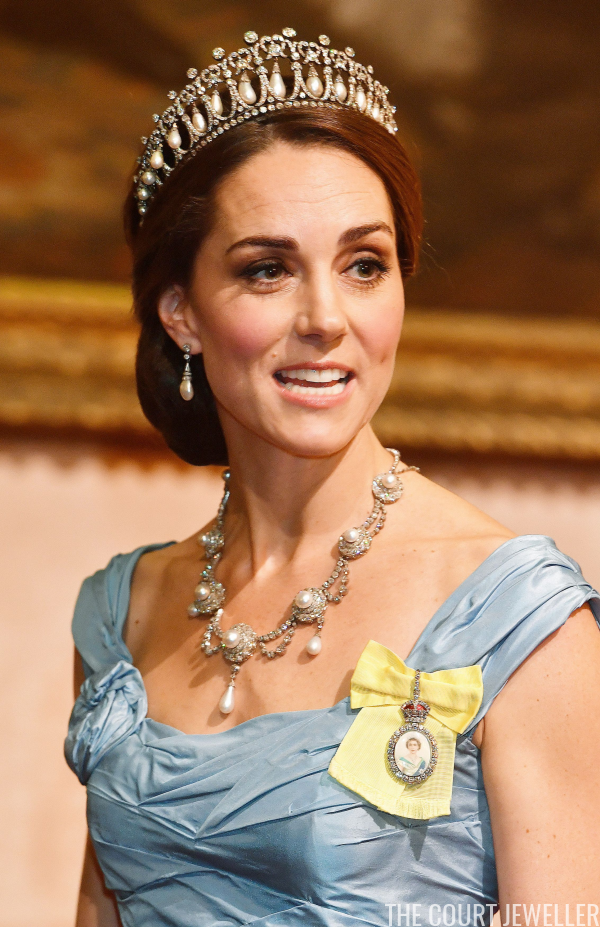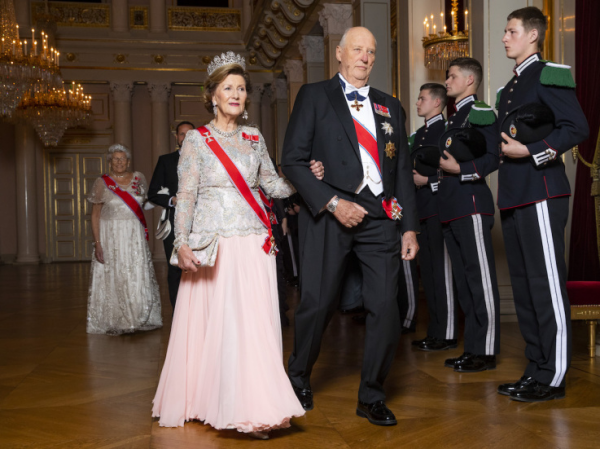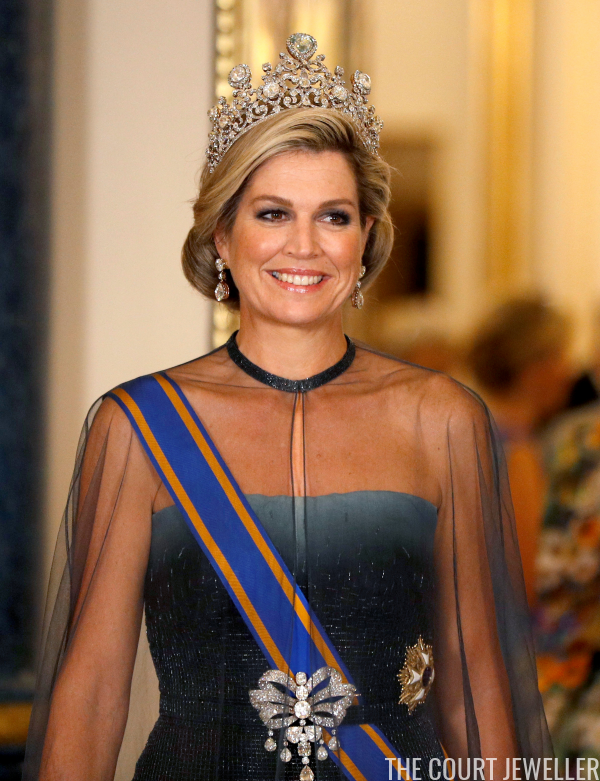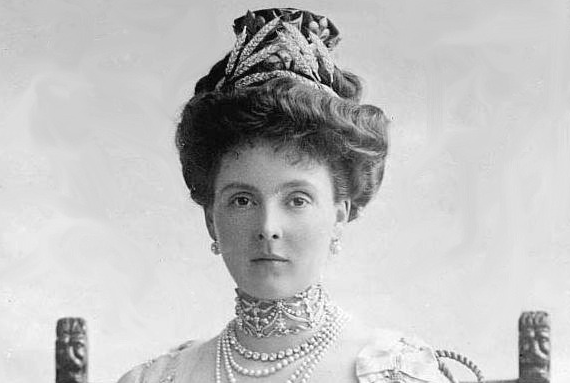 |
| Princess Alice wears the Teck Ears of Wheat Tiara during the 1911 coronation celebrations (Grand Ladies Site) |
Autumn is in full swing here at the Court Jeweller HQ, and I’ve been in the mood to discuss a rather autumnal jewelry design: diamond ornaments in the shape of ears of wheat. Today, we’re talking about one interesting royal example of the type, the Teck Ears of Wheat Tiara.
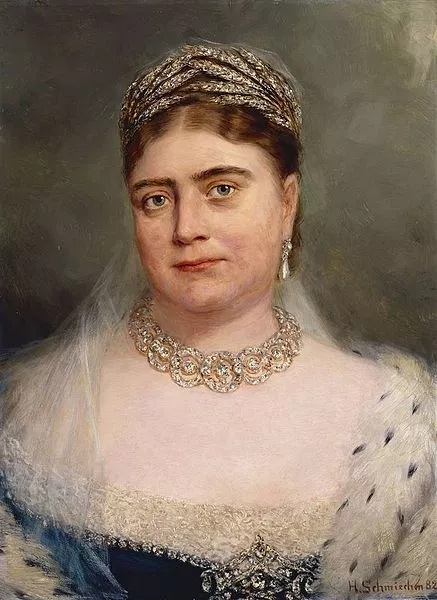 |
| Princess Mary Adelaide wears the tiara in an 1882 portrait by Hermann Schmiechen |
We first encounter this set of diamond wheat ear ornaments, able to be worn in various configurations on a tiara frame, in the collection of Princess Mary Adelaide of Cambridge, later the Duchess of Teck. She may not have been the first owner of the ornaments — we don’t know precisely how old they are — but ears of wheat, perhaps these very ones, were definitely in her jewelry box early on. The Glasgow Herald reported that, for a state ball at Buckingham Palace in the summer of 1857, Princess Mary Adelaide’s gown “was ornamented with diamonds and silver wheat ears,” and she “wore a wreath of silver wheat ears round [her] head.” (The design was popular; the Princess Royal also wore a tiara made of ears of wheat for the same ball.)
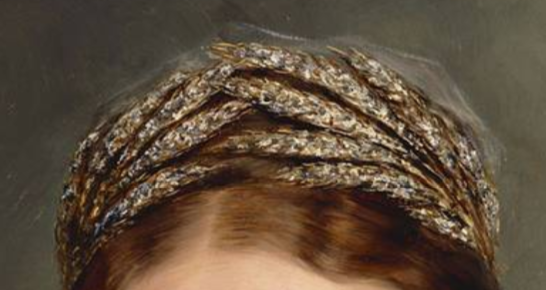 |
| Princess Mary Adelaide wears the tiara in an 1882 portrait by Hermann Schmiechen |
Mary Adelaide was painted in the Ears of Wheat Tiara, the Diamond Hoop Necklace, and her diamond stomacher by Hermann Schmiechen in 1882. Here’s a close-up of the tiara from that portrait. We don’t know precisely how many diamond ears of wheat she owned, but counting up individual ears from various images through history suggest that there may be as many as twelve or fourteen.
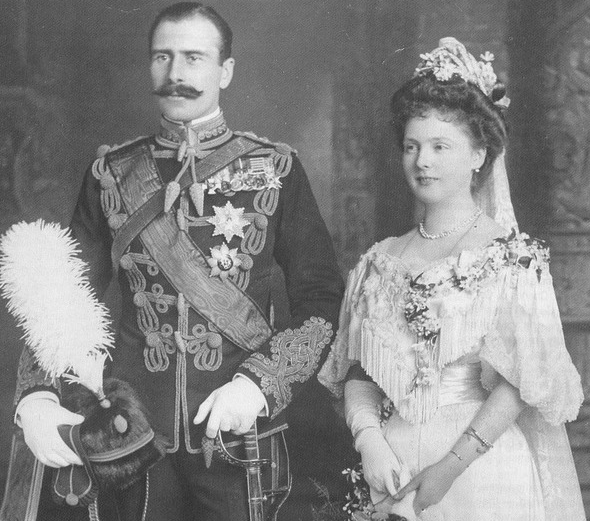 |
| Prince Alice of Albany wears the Teck Ears of Wheat Tiara in an official portrait from her wedding to Prince Alexander of Teck, 10 February 1904 (Grand Ladies Site) |
When the Duchess of Teck died in 1897, the diamond ears of wheat were inherited by her youngest son, Prince Alexander. When he married Princess Alice of Albany, a granddaughter of Queen Victoria, in 1904, he presented the tiara to her as a wedding present. She wore the ears of wheat on her wedding day, although it can be a bit tough to spot them in the official portraits, as she also wore flowers in her hair.
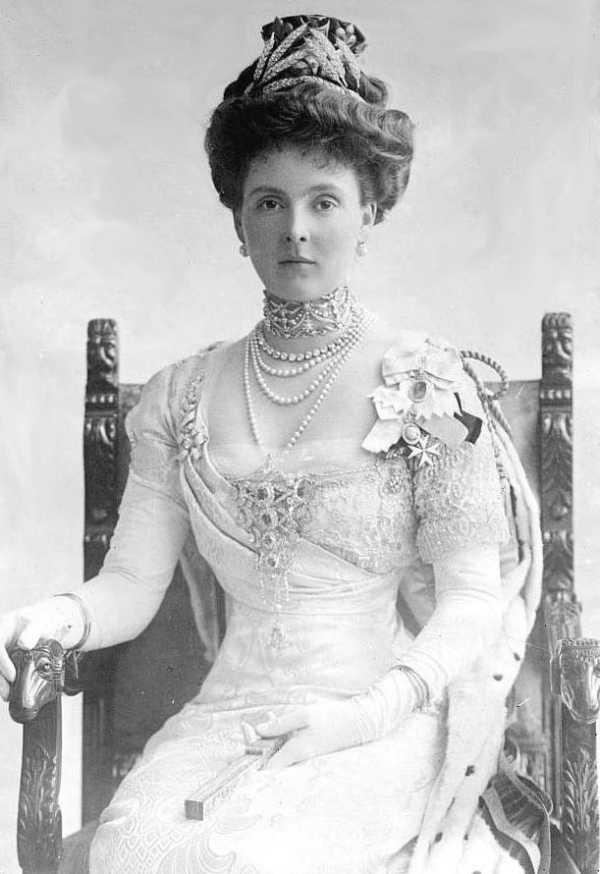 |
| Princess Alice wears the Teck Ears of Wheat Tiara during the 1911 coronation celebrations (Grand Ladies Site) |
For my money, the tiara has never looked better than it did in 1911, when Princess Alice wore it in a portrait taken during the coronation festivities for her in-laws, King George V and Queen Mary. (Queen Mary and Prince Alexander were siblings.) Eight of the ears of wheat were used on this occasion, placed in a striking and effective arrangement against Alice’s coronet. You’ll also spot the grand stomacher here that was also an inheritance from the Duchess of Teck.
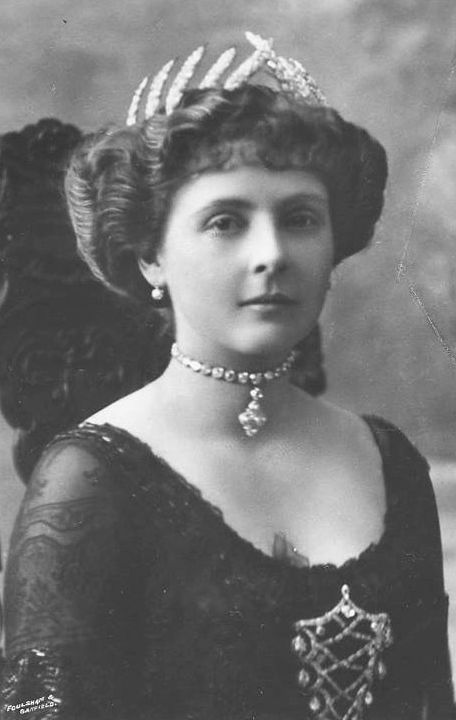 |
| Princess Alice wears the tiara in a postcard portrait taken before 1917 (Grand Ladies Site) |
Alice wore more of the ears of wheat — ten in all — on a tiara frame in this postcard portrait. I don’t know the precise date of the photograph, but it was taken before 1917, when Alexander and Alice surrendered their German titles, becoming Alexander Cambridge, Earl of Athlone and Princess Alice, Countess of Athlone. This postcard still labels her “Princess Alexander of Teck.” Again, a version of the diamond stomacher is also among the jewels worn for this portrait.
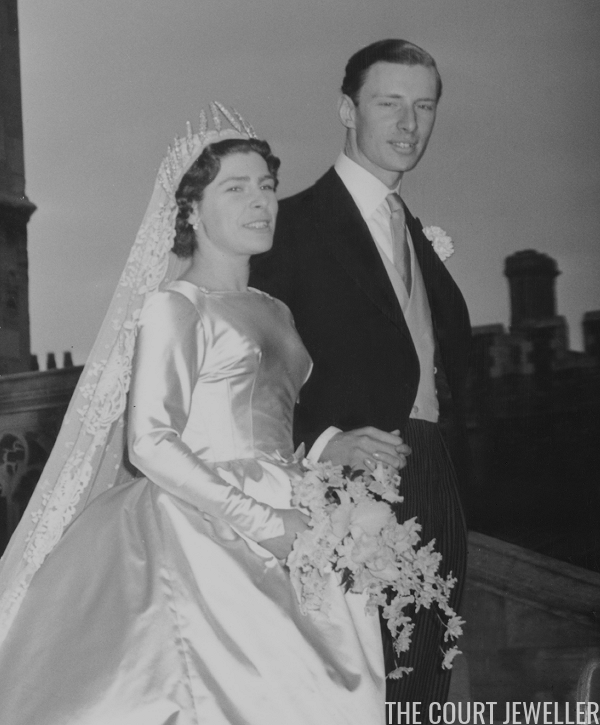 |
| Anne Abel Smith wears the tiara as she marries David Liddell-Grainger, 14 December 1957 (Ron Burton/Keystone/Hulton Archive/Getty Images) |
Alexander and Alice had three children, but only one of them, Lady May Cambridge, lived long enough to have a family of her own. She married Sir Henry Abel Smith in 1931, and the Ears of Wheat Tiara has become something of a bridal diadem for their descendants. Princess Alice loaned the ears of wheat to her eldest grandchild, Anne Abel Smith, who wore them in a curiously upright formation when she married David Liddell-Grainger at St. George’s Chapel, Windsor in 1957. The tiara was also reportedly loaned by Alice to Marcia Kendrew, the bride of Richard Abel Smith, in 1960. Several of Anne Liddell-Grainger’s descendants have also worn the tiara, suggesting it may still be with that branch of the family today.
